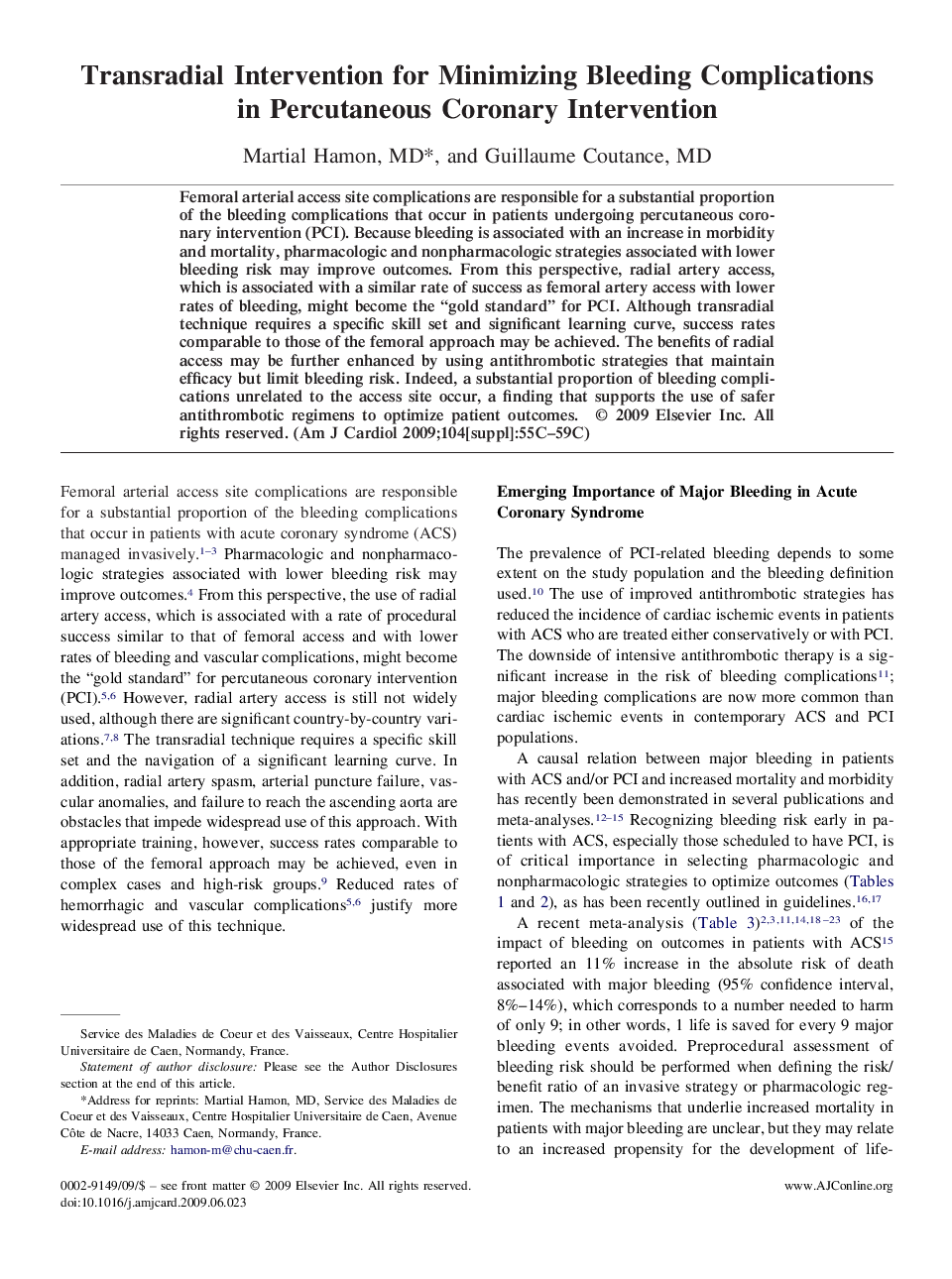| کد مقاله | کد نشریه | سال انتشار | مقاله انگلیسی | نسخه تمام متن |
|---|---|---|---|---|
| 2857757 | 1572294 | 2009 | 5 صفحه PDF | دانلود رایگان |

Femoral arterial access site complications are responsible for a substantial proportion of the bleeding complications that occur in patients undergoing percutaneous coronary intervention (PCI). Because bleeding is associated with an increase in morbidity and mortality, pharmacologic and nonpharmacologic strategies associated with lower bleeding risk may improve outcomes. From this perspective, radial artery access, which is associated with a similar rate of success as femoral artery access with lower rates of bleeding, might become the “gold standard” for PCI. Although transradial technique requires a specific skill set and significant learning curve, success rates comparable to those of the femoral approach may be achieved. The benefits of radial access may be further enhanced by using antithrombotic strategies that maintain efficacy but limit bleeding risk. Indeed, a substantial proportion of bleeding complications unrelated to the access site occur, a finding that supports the use of safer antithrombotic regimens to optimize patient outcomes.
Journal: The American Journal of Cardiology - Volume 104, Issue 5, Supplement, 7 September 2009, Pages 55C–59C